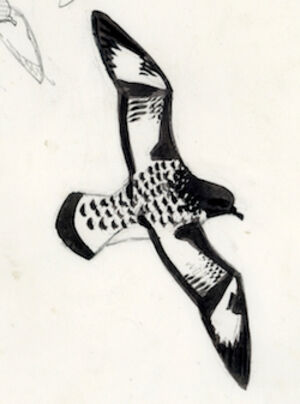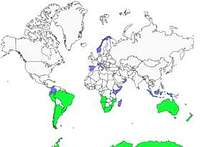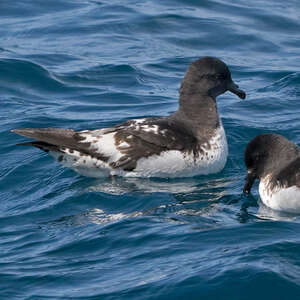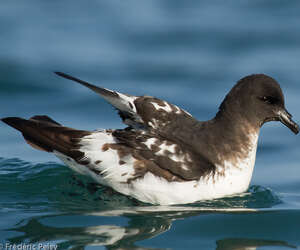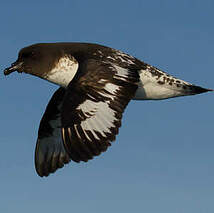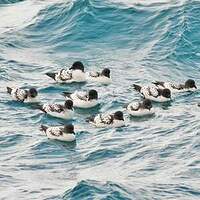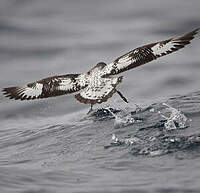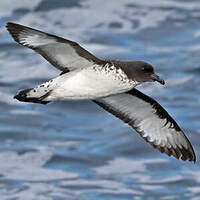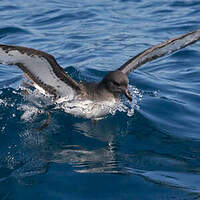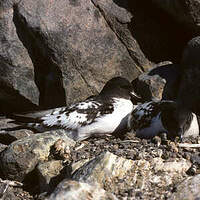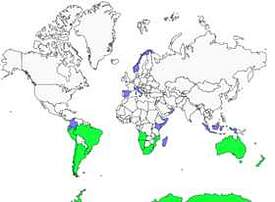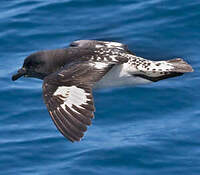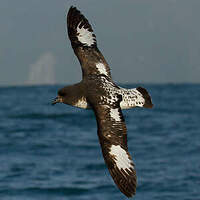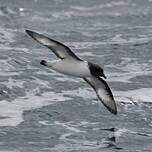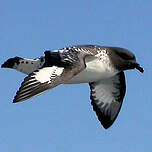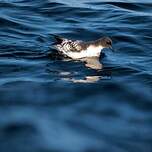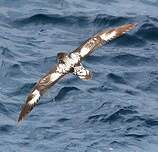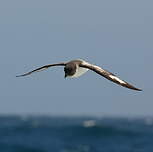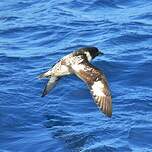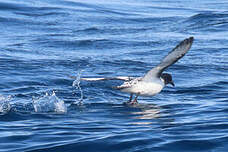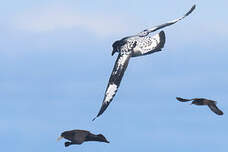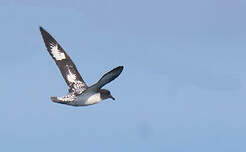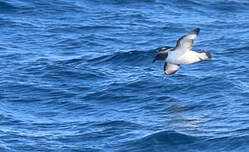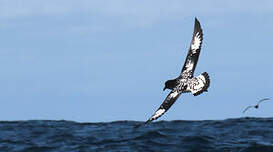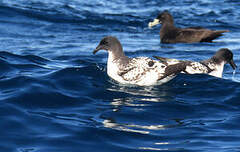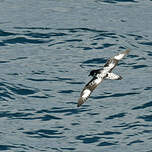Cape Petrel
Daption capense - Damier du Cap
Identification
This unmistakable species is often seen in large numbers around fishing boats. The top of the head is black, and its back displays a mixture of black and white spots (hence its French name, Cape Petrel). The wings are dark but marked with two distinct white patches. The tail ends with a large black bar. Birds of the northernmost subspecies (D. c. australe) are particularly dark, with less white in their plumage. The underside is white except for the black throat. The leading and trailing edges are also black, along with the tips of the rectrices.
Subspecific information 2 subspecies
- Daption capense capense (subantarctic islands, Antarctic Pen.)
- Daption capense australe (New Zealand's subantarctic islands)
Foreign names
- Damier du Cap,
- Petrel damero,
- pintado,
- Kapsturmvogel,
- galambhojsza,
- Kaapse Stormvogel,
- Procellaria del Capo,
- brokpetrell,
- Flekkpetrell,
- fulmarka tenkozobá,
- buřňák černobílý,
- Kap-petrel,
- kapinmyrskyliitäjä,
- Seeduifstormvoël,
- petrell del Cap,
- Mardúfa,
- warcabnik,
- Kāpzemes vētrasputns,
- kapski viharnik,
- Капский голубок,
- Petrel tanjung,
- マダラフルマカモメ,
- 花斑鹱,
- 南非鸌,
Habitat
Behaviour character trait
Dietfeeding habits
Reproduction nesting
Geographic range
The nominate subspecies breeds on different sub-Antarctic islands as well as on some cliffs of this continent. On the other hand, the subspecies D. c. australe (endemic to New Zealand) has a much more northern distribution, as it nests on the small archipelagos located south of New Zealand, as far north as Chatham Islands and The Snares. It can be seen on all seas south of the Tropic of Capricorn. It goes up along the western coasts of Africa and South America following the Benguela and Humboldt currents. Exceptionally, it can even reach Mexico, California and Reunion Island.
Threats - protection
IUCN conservation status
concern
in the Wild
threatened
evaluated
The population reaches several millions of individuals and the species is not threatened. However, the northern subspecies (D. c. australe) only counts a few thousand pairs.
Sources of information
- IOC World Bird List (v14.1), Gill, F and D Donsker (Eds). 2024-04-18.
- Avibase, Lepage Denis
- Albatrosses, Petrels and Shearwaters of the World, Onley Derek et Scofield Paul
- Field Guide to New Zealand Seabirds, Parkinson Brian
- Seabirds, an identification guide, Harrison Peter
- The hand guide to the birds of New Zealand, Robertson Hugh et Heather Barrie
- Vol. 1 - Handbook of the Birds of the World, Josep del Hoyo-Andrew Elliot-Jordi Sargatal
- BirdLife International, BirdLife International
Other sources of interest
 Specification sheet created on
30/07/2023 by Georges Olioso
Specification sheet created on
30/07/2023 by Georges OliosoTranslation by AI Oiseaux.net
© 1996-2024 Oiseaux.net
- Accipitriformes
- Aegotheliformes
- Anseriformes
- Apodiformes
- Apterygiformes
- Bucerotiformes
- Caprimulgiformes
- Cariamiformes
- Casuariiformes
- Charadriiformes
- Ciconiiformes
- Coliiformes
- Columbiformes
- Coraciiformes
- Cuculiformes
- Eurypygiformes
- Falconiformes
- Galliformes
- Gaviiformes
- Gruiformes
- Leptosomiformes
- Mesitornithiformes
- Musophagiformes
- Nyctibiiformes
- Opisthocomiformes
- Otidiformes
- Passeriformes
- Pelecaniformes
- Phaethontiformes
- Phoenicopteriformes
- Piciformes
- Podargiformes
- Podicipediformes
- Procellariiformes
- Psittaciformes
- Pterocliformes
- Rheiformes
- Sphenisciformes
- Steatornithiformes
- Strigiformes
- Struthioniformes
- Suliformes
- Tinamiformes
- Trogoniformes

